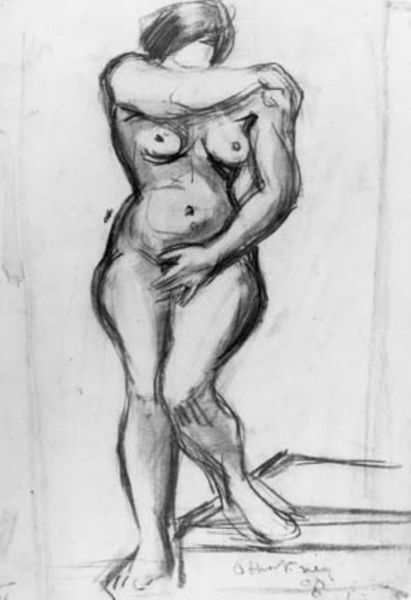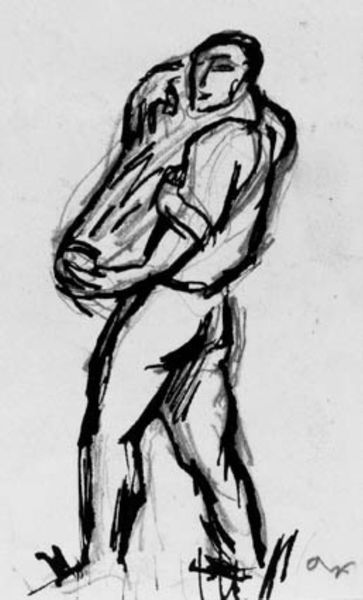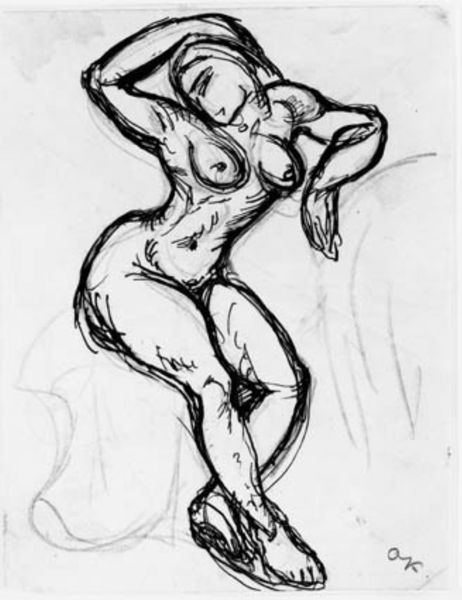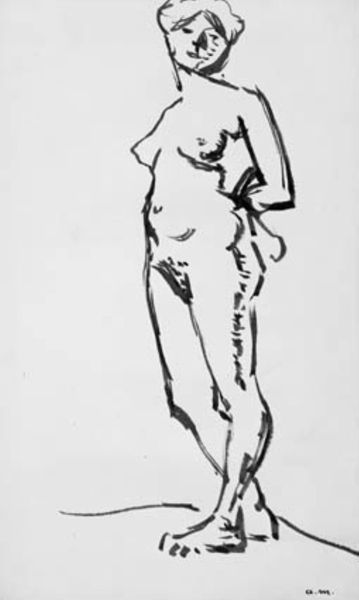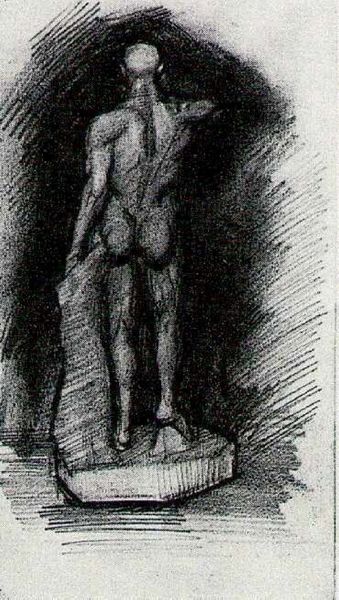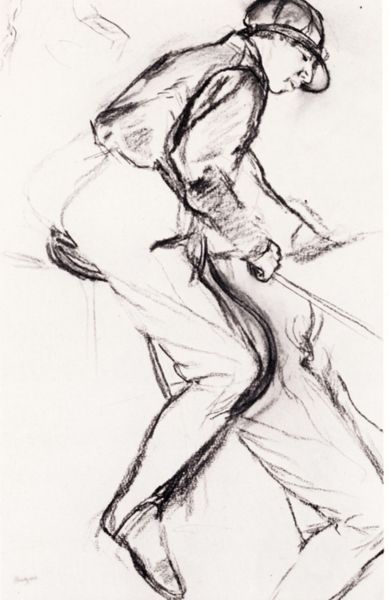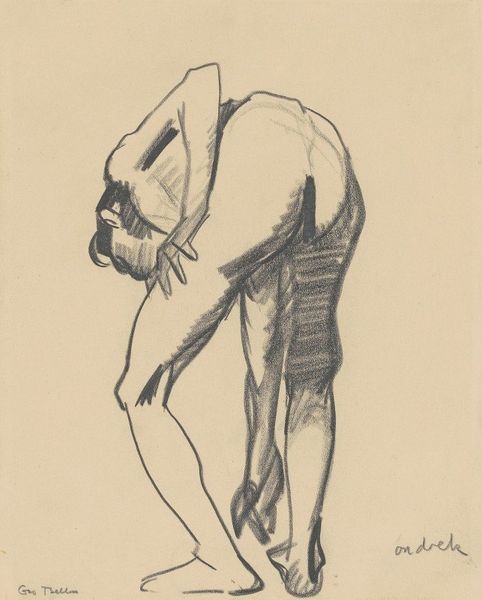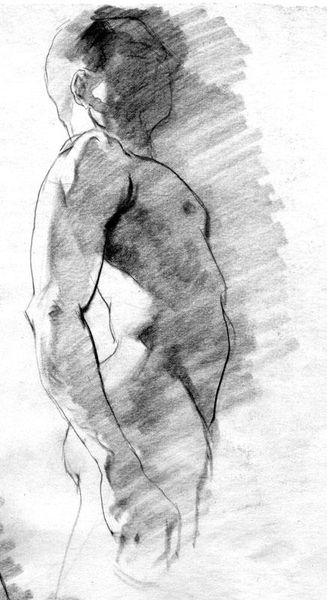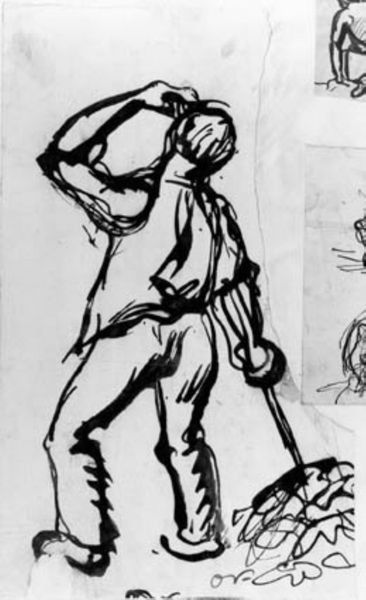
drawing, pencil
#
portrait
#
drawing
#
figuration
#
pencil
Dimensions: 195 mm (height) x 108 mm (width) (bladmaal)
Editor: So, this is Othon Friesz's "Studie af stående, rygvendt mand med en sæk," a pencil drawing from 1907. It's a quick sketch, really, but the musculature is very prominent. What catches your eye when you look at this drawing? Curator: The raw process immediately grabs me. We see the artist's hand at work, the immediacy of the pencil strokes revealing the labor involved. Note how the pencil is used, the varying pressure and direction to define form, especially highlighting the subject’s back and shoulders. What do you think about the material used? Editor: Well, it’s "just" a pencil drawing, seems like quite a simple way to approach figuration...almost academic. But you're right; I see how the very act of drawing emphasizes the physicality of both the subject *and* the artist. The emphasis is on effort, isn't it? Curator: Exactly! The sack, seemingly secondary, actually grounds the figure in a social reality. A simple, mundane object gains prominence here. How does the inclusion of a common item like this, alter the artwork's statement? Editor: It connects the figure to work, to manual labor. It ceases to just be an abstract study of the body and becomes a statement about the worker, his labour, his place in the social fabric. Is this challenging established ideas around the status and symbolism granted to certain subjects or types of work? Curator: Precisely. It compels us to re-evaluate our notions of skill, craft, and the traditional boundaries between 'high art' and the everyday realities of labor. What kind of relationship do you think it fosters with the viewer? Editor: The materiality of the piece really shifts how I understood the purpose of the drawing - what appeared like a 'simple sketch' now has social meaning. Thanks! Curator: Agreed! Seeing the drawing through the lens of material conditions truly illuminates its richness.
Comments
No comments
Be the first to comment and join the conversation on the ultimate creative platform.
